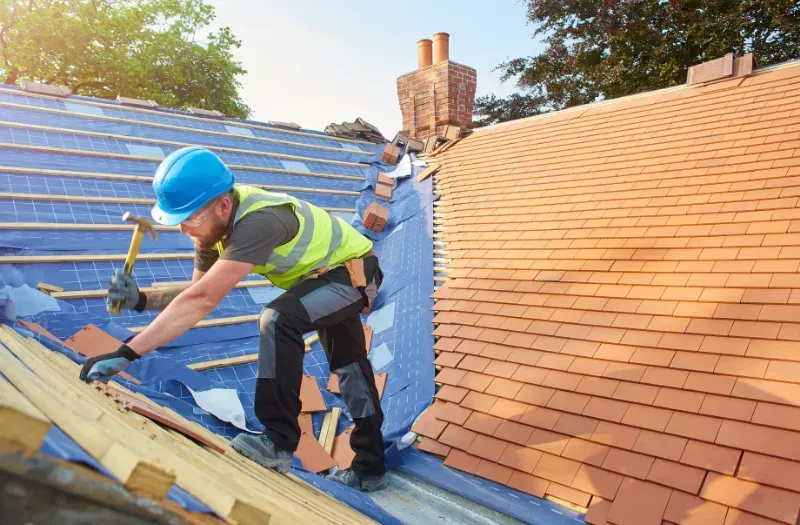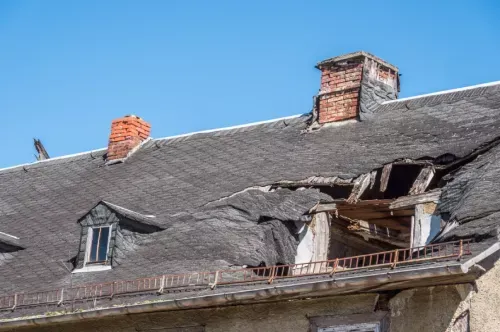Filing Roofing Insurance Claims for Storm Damage in Houston, TX: Step-by-Step Process
August 30, 2023 by lonestarroofinghouston

Filing Roofing Insurance Claims for Storm Damage in Houston, TX: Step-by-Step Process
August 30, 2023 by lonestarroofinghouston
Houston, Texas, is among the best places to live and work, thanks to its warm weather, low cost of living, and affordable housing. Residents in this beautiful and fantastic city also enjoy plenty of sunshine. However, Houston homeowners and business owners must deal with occasional severe storms, including hurricanes, thunderstorms, and hailstorms. These extreme weather elements can wreak havoc on your residential or commercial properties. One crucial component of your building that will suffer significant damage is your roof. Although we don’t often pay attention to our roofing systems, they safeguard our valuables and the ones we love against the elements.
That’s why filing an insurance claim as quickly as possible is vital if your roof suffers storm damage. Filing a roofing insurance claim quickly can help you get the necessary repairs or replacements covered by your homeowner’s insurance. However, filing an insurance claim can be overwhelming, especially if you’re unfamiliar with it. Fortunately, our expert roofers at Lone Star Roofing will walk you through the step-by-step storm damage insurance claim process in Houston, Tx
Assess the Storm Damage

The first crucial step after storm damage is to assess your roof for any visible signs of damage. But before checking the damaged roof, think about your safety and those around you. Firstly, don’t go near the wreckage if the floor is slippery or you believe the area is unsafe. Above all, wear appropriate safety gear, including a helmet and sturdy shoes, before assessing the damage. Also, don’t assess the damage during adverse weather conditions to avoid accidents or further damage.
After prioritizing your safety, look for tree branches or objects that may have fallen on your roof, damaging it. Tree branches, twigs, and leaves can fall on your roof during the storm, damaging roof shingles and other components like metal panels and tiles. They can also clog downspouts and gutters, increasing the risk of water leaks and damage.
Next, inspect your roof for missing or damaged shingles. While you are at it, remember to look for visible signs of dents, curling, or cracking. Identifying missing or damaged shingles early on and replacing them can help prevent water leaks and further damage. In addition, check for water stains on walls or ceilings inside your house. You can start by checking the attic before checking other rooms in your house. From there, you can check other roof components, including skylights, chimneys, and vents, for signs of damage.
Review Your Insurance Once Again
Now that you have a comprehensive overview of what you are dealing with, it’s time to file your insurance claim. But before that, take your time to review your insurance once again. Reviewing your insurance policy will give you a complete overview of your coverage. Most insurance policies cover damages caused by wind, hail, and stormwater damage. Moreover, most policies cover damage caused by falling debris, lightning strikes, and other storm-related damages.
While checking the terms of your insurance plan, it’s also essential to check deductibles. A deductible is simply the amount of money you need to pay out of pocket before your insurer starts to compensate you. Let’s assume your storm damage repair costs amount to $3,000, and you have a $500 deductible. In such a case, you will have to spend the first $500 then your insurance company will cover the remaining $2,500 later. Remember to read through your insurance cover to identify specific deductible amounts for storm damage claims. You can compare the estimated repair or replacement costs against your deductible. If the estimated expenses are close or less than your deductible, filing a claim may not be a good idea. This is because your insurer will expect you to cover the costs entirely.
Document the Damage
The next essential step to filing a claim after storm damage is documenting the damage. This step will give you sufficient evidence to support your claim and increase your chances of getting the compensation you deserve. Start by recording visual evidence, including photographs and videos. You can use your smartphone or a camera to capture high-resolution videos and images. Remember to take photos from different angles and attach close-ups of individual damaged shingles and other roofing components.
Also, don’t forget to document interior damage caused by the storm. Include wide shots and close-ups of water stains on the floor, ceiling, and walls. These photos will help you prove that the damage has been caused due to the storm. Above all, ensure each photograph contains a date and timestamp to strengthen your claim’s validity. You can also write a comprehensive description of the damage, highlighting areas damaged due to the storm. Don’t forget to note the temporary measures you’ve taken to prevent further damage. You can also use previous roof inspection reports or repair records as before and after evidence to support your claim.

Contact Your Insurance Company
Now that you have sufficient evidence to prove your claim, it’s time to contact your insurer. Remember to contact the insurance company as soon as possible so that the claim process can start without unnecessary delays. You can contact them through email or by calling the claims department. Once you get a hold of their agent, explain to them that you need to file a roofing insurance claim for your storm damage.
After that, their representative will likely ask you for your policy number, storm date, and a brief overview of the damage. So, arm yourself with all relevant information, including details of the damage, documentation, and date and time, before making the call. From there, your insurer will provide instructions to help you through the initial steps of the claim process. They may also schedule an inspection or ask you to complete additional documentation. Don’t forget to ask questions or notify them about any concerns you may have during your call.
Schedule an Inspection
An assessment will allow your insurance company to assess the extent of the storm damage. This often involves sending an insurance adjuster to assess the storm damage for them. Be flexible with your schedule to ensure a seamless claims process. It’s also advisable to be present during the inspection. This will allow you to let the public adjuster know what happened and the extent of the damage.
You can also present your documented evidence to prove your case. Also, give the adjuster access to every area of your property so that they may make a comprehensive assessment. You can also have your roofing contractor with you during the inspection. Their expertise will be crucial during the inspection and throughout the claims process.

Review Your Deductibles
Due to the recent state law changes in Texas, paying attention to your deductibles is essential. The new law seeks to protect unsuspecting Texas property owners from dishonest roofers. As per this law, property owners are expected to pay all their deductibles. So avoid roofing companies that promise to waive or pay your insurance deductibles. Here at Lone Star Roofing, we abide by the law and ensure transparency.
Find a Trusted and Reliable Roofer
As you wait for the public adjuster’s assessment, take the time to look for a roofing company you can trust. Above all, ensure that the company you pick doesn’t require a deposit. Some roofers ask for quotes and end up scamming unsuspecting property owners. Others are known to frustrate clients after they receive the deposit. Instead of working with roofers who ask for any money upfront, safeguard your investment and peace of mind by working with a team that asks for payments once they complete the job to your satisfaction.
Review the Insurance Adjusters Assessment and Negotiate if Necessary
Once you receive a report of the storm damage and the proposed scope of coverage from the public adjuster, take your time to ensure that all damages are correctly identified in that assessment. Let the adjuster know immediately if you notice any missing or ignored damage. After that, compare the adjuster’s evaluation with the contractors’ quotes to ensure fair pricing. In case of any discrepancies between the assessment and the quotes, contact your insurance company to seek clarification. You can also negotiate with your insurance company if you believe that the evaluation ignored certain damages.
Receive a Claim Payment and Proceed With the Repairs or Replacements
If your insurer approves your claim, you will receive a claim payment, depending on your coverage and deductibles. Once you receive the claim payment, don’t hesitate to begin repairs or replacements. Remember to work with a reputable, reliable roofing contractor with years of experience in storm damage repairs and replacements, such as Lone Star Roofing.
Our professional roofing team at Lone Star Roofing is ready to assist you throughout the roofing insurance claim process and the repair or replacement phase. Contact our experienced Houston roofing contractor today to schedule a consultation and comprehensive inspection.
Roof Replacement Services in Houston, TX


